Everyone knows the importance of staying hydrated. You’ve probably heard the recommendation of drinking eight glasses of water every day. But how do you translate that for your canine companion? Have you ever actually paid attention to how much your dog drinks each day? Unless they’re behaving out of the ordinary, probably not. But if you have a dog drinking a lot of water, it always catches your attention. And when you find yourself refilling that bowl multiple times a day? You start to wonder if something’s going on. A dog drinking a lot of water IS a sign of a health problem. But figuring out which one will take some investigation with your vet. However, you CAN help by looking for some extra clues. And we’ll help you with what to watch for.
Dogs and Water
Do you finish eight glasses of water (or more) every day? Maybe yes, maybe no. It’s a popular mantra in health circles but not a hard-and-fast rule. As long as you keep yourself hydrated, you’ll remain healthy. And the same goes for dogs. But what does their amount look like? Well, if you want to measure it, it comes out to around one ounce per pound. To give you an example (and help put the math in perspective), a 10-pound dog needs a little over one cup of water each day.
But there’s wiggle room (kind of like you find with humans). Active dogs need more water. So do mommy dogs producing milk for their babies. And puppies, in general? Because they’re still in the process of growing, they need more water to help supply their body. So measuring out a specific amount into your dog’s bowl won’t work.
You usually know when your dog starts drinking a lot of water, though. And that’s when alarm bells should start going off.
Polydipsia
Polydipsia is the medical term for drinking more water than normal. And it’s pretty common in the vet world. Any time the body needs to cool down, rehydrate, or correct a loss of blood volume, you’ll see increased thirst. And that’s the tip of the iceberg on why you may see your dog drinking a lot. SOMETHING in the body is out of whack, and the increased thirst is an attempt to correct the problem. Unfortunately, no disease ever fixes itself with an extra glass of water. This is why you need to make an appointment with your vet when you spot your dog hanging out at their water bowl – or hunting around the house for extra water sources.
“An owner should be concerned if their dog drinks the entire bowl at once and continues to drink every time water is offered.”
~Elizabeth Appleman, VMD, DACVIM (SAIM)
Dog Drinking A Lot of Water
The majority of the time, you’ll find a medical reason for your dog drinking a lot of water. There are three tiny exceptions to the rule, though. That doesn’t mean you shouldn’t still pay attention. Any change to your dog’s usual behaviors should trigger an alert in your mind. At the least, you’ll want to keep an eye on things to see if they settle down or not. (You can always cancel your vet appointment)
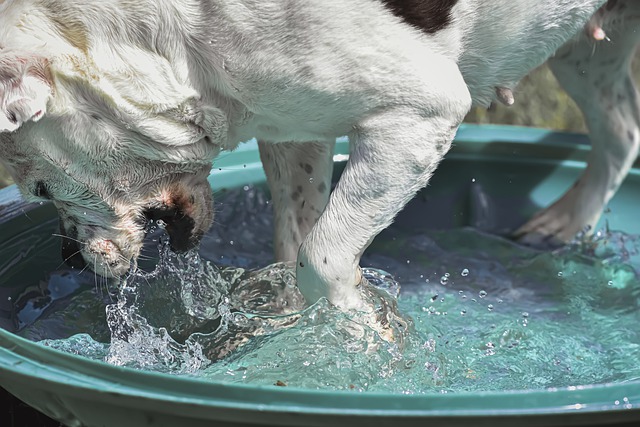
Non-Medical Reasons For a Dog Drinking A Lot of Water
As spring and summer bring warmer temperatures, you can see your dog drink more water. This doesn’t have to do with illness. It’s their way of adapting to the rising mercury in the thermometer. Dogs can only sweat through the pads of their feet and their nose. So when their body gets warm, they start panting more. And panting creates evaporation. (Quick science note: evaporation generates water loss) Until they acclimate to those higher outside temperatures again, they’re going to drink more. But it SHOULD return to normal. If not, you need to get to the vet.
Water Toxicity
There’s another warm-weather activity that can prompt your dog to take in more water than usual. And that CAN lead to medical problems if you’re not careful: water toxicity. The tricky thing here is, you may not even recognize the problem as a dog drinking a lot of water. Because water toxicity happens when dogs are doing what they do best – having fun.
How many dogs love playing fetch in the pool or out on the lake? Maybe they retrieve toys from the bottom, diving down repeatedly. Or you could have a dog that delights in getting sprayed by a sprinkler or the hose, snapping at the water. It’s playing, but it also involves a dog drinking A LOT of water.
When pups take in too much water (even unintentionally) it drops the levels of sodium in the body. This is called hyponatremia, and it’s a serious problem. You’ll start noticing other symptoms as sodium levels fall:
- Dilated pupils
- Glazed eyes
- Restlessness
- Lethargy
- Drooling and vomiting
- Bloating of the stomach
- Loss of coordination
If you don’t intervene IMMEDIATELY, you’ll see that low sodium level impact your dog’s brain. Pressure goes up, leading to difficulty with their breathing, seizures, and even the possibility of a coma. You want to get your dog to a vet as soon as you note any of the above signs.
However, the BEST option is to prevent water toxicity from happening in the first place. You don’t need to keep your dog out of the pool, but you should implement frequent breaks. This limits the amount of water they’ll swallow while they play. As for the hose or sprinkler? Try to cut down the pressure AND time.
Diet
You can also see your dog drinking a lot of water based on their diet. Pups that only receive dry foods or receive snacks high in sodium will sneak off for open toilets or other water sources. It isn’t because they’re sick or even due to the food being bad for them. It’s because they aren’t getting enough moisture out of the diet.
Dry food is DRY. There’s usually less than 10% water in kibble. If you don’t balance out your dog’s diet with watery treats, you’ll see them drinking more. You can slow down their drinking by incorporating high-quality canned food into their routine. Wet foods are (as you probably guessed) WET. So when dogs receive canned food as part of their diet, they don’t need to drink quite as much.
Medical Causes for a Dog Drinking A Lot of Water
The majority of the time, when your dog starts to drink more, there’s a health condition behind the change. And puzzling out the cause is easier in some cases than in others. You’ll want to look for other signs and symptoms that might help explain why your dog is drinking a lot of water. Are they also eating more? Have they been vomiting or having diarrhea? Did they start a new medication? Are you seeing an increase in the amount they’re urinating, too – or is that remaining the same (or possibly less)? All of these clues will help when you make an appointment with the vet.
Dehydration
The biggest reason for a dog drinking a lot of water? Dehydration. Of course, the reasons for dehydration include everything from those changing seasons to a lengthy play session to infection. So it’s usually a symptom of something else going on. But you want to pay attention because the longer dehydration persists, the more serious the situation gets. Severe dehydration requires hospitalization with IV fluids.
You can do a quick check to determine if your dog is properly hydrated or not by looking at their skin turgor or mucus membranes.
Assessing Skin Turgor
- Pick a spot along your dog’s back.
- Pinch the skin between your fingers.
- If your dog’s well-hydrated, it will “snap” back into position immediately.
- In a dog that’s dehydrated, the skin will remain pinched up.
This is NOT a precise test, but it provides a rough guess on how well your dog’s doing with their water consumption. And if you see that “tent” remain when your dog’s drinking a lot of water? You know there’s a problem. Get to the vet ASAP.
Assessing Mucus Membranes
Your dog’s mucus membranes (gums) are another key spot to check for dehydration. When they’re healthy, you can touch the gums and feel a slick surface. But when you have a dehydrated dog? Gums can feel dry or sticky. You may also see “ropy” saliva. That’s a big red flag that there’s a problem.
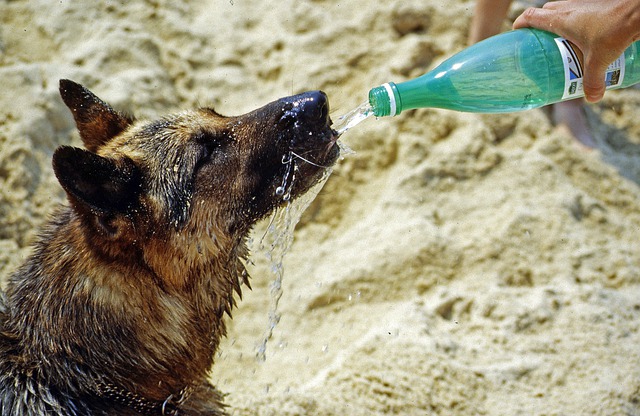
Diseases
Plenty of conditions interfere with the way the body handles fluids. As a result, you see your dog drinking a lot of water. And while you’ll find different diseases, all of them center around influences on the kidneys. That’s not a big surprise. After all, the kidneys control the flow of fluid in and out of the body.
So, obviously, when the kidneys start failing, you can see increased thirst. Kidney disease often sends dogs scrambling for the water bowl. At the same time, you’ll see increased urination. This is because the poor kidneys are struggling to process bodily waste into the urine. The body compensates by encouraging drinking. It’s a rough cycle. But some quick lab work will let your vet know the kidneys are crying for help.
Then you have diabetes. True, diabetes is a disease of the pancreas. The pancreas fails to produce the proper amount of insulin. This means high levels of glucose (sugar) building up in the bloodstream. The poor kidneys don’t know what to do with all of the glucose, though, so it spills into the urine. (Another little science lesson: sugar creates a gradient, pulling water with it) As a result, you find your dog drinking a lot of water AND urinating large amounts. They also lose weight because they can’t process the glucose in their food. Again, labwork will help your vet unravel this mystery.
In hypoadrenocorticism or Cushing’s disease, the adrenal glands (which sit on top of the kidneys) go overboard on cortisol production. Cortisol is a natural steroid. And steroids in the body? They lead to increased thirst, hunger, and urination. You also see hair loss and a round, pot belly. There’s a simple lab test to pinpoint Cushing’s disease.
Medication
Sometimes, you’ll notice your dog drinking a lot of water after starting a new medication. Your vet SHOULD warn you about these possible side effects. If they don’t, call and ask. They may need to adjust the dose if you see excessive thirst. (Just because your canine companion needs a certain therapy doesn’t mean they should end up dehydrated)
The biggest offenders?
- Anticonvulsants (such as phenobarbital)
- Diuretics (such as furosemide)
- Steroids (such as prednisone)
How to Measure If Your Dog’s Drinking A Lot of Water
So how do you decide if your dog’s drinking a lot of water? First, NEVER restrict the amount of water you offer. That can lead to dehydration. If your dog’s vomiting after gulping large amounts of water, swap the bowl out for ice cubes. It will slow them down in the drinking process without taking the water away.
Otherwise, it’s very easy to “measure” how much your dog drinks – without resorting to breaking out a measuring cup every day:
- Start with an empty bowl at the same time every day.
- Fill it to a level you can see (use waterproof tape or marker if you need it). If you want, record the exact amount.
- At the end of the day, note how far the level dropped. Again, you can dump it out and record the amount.
- Always refill the bowl to the same level each day.
If you’re seeing that level go down further, you know your dog’s drinking more. And if you need to refill it before the next day? Your dog is drinking A LOT. That’s your cue to get on the phone with your vet.
On the Rocks
Water’s important. Everyone needs to stay hydrated – including your furry friend. But it IS possible for a dog drinking a lot of water to go TOO far. And excessive drinking lets you know there’s a problem. You need to call your vet right away and get your pup in for some lab work. They’ll figure out what’s going on. Then your poor pup won’t need to drain every bowl they come across.
Because while water’s a good thing, you CAN have too much of a good thing. At least, when you’re drinking it by the gallon.

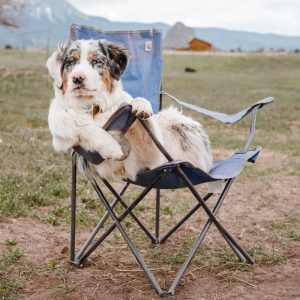
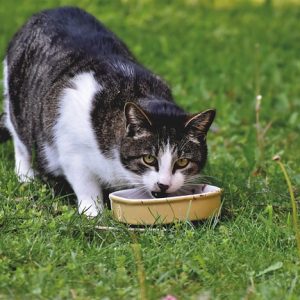
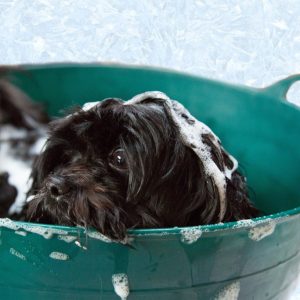


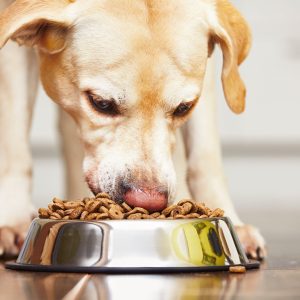



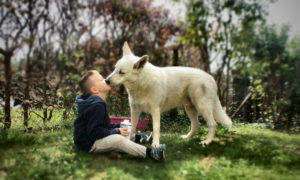
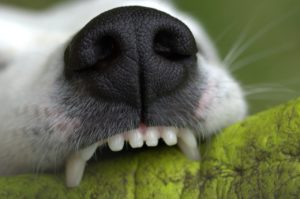
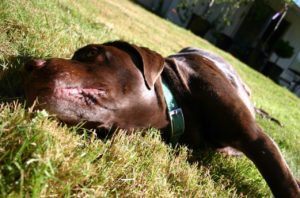
No comment yet, add your voice below!